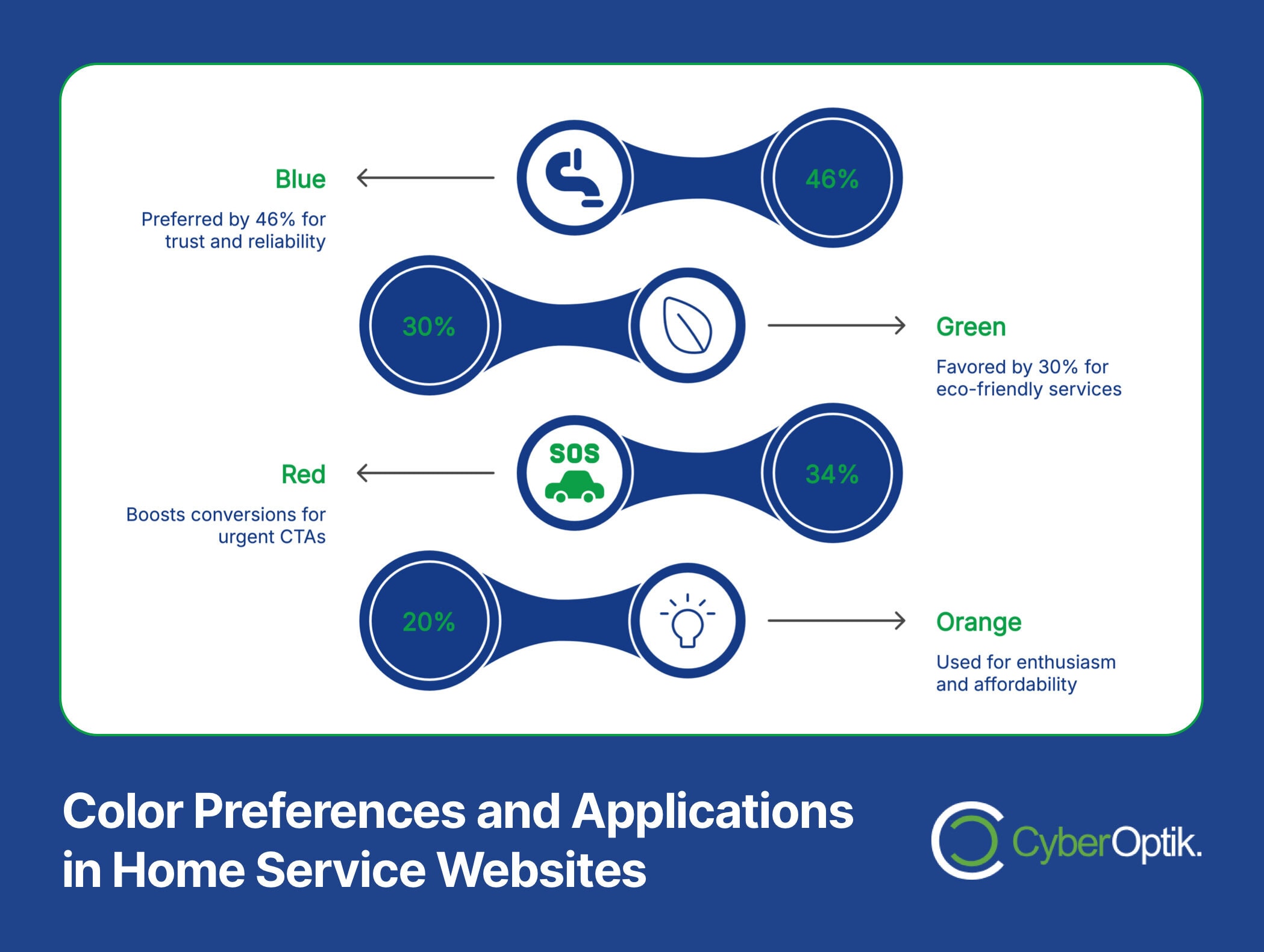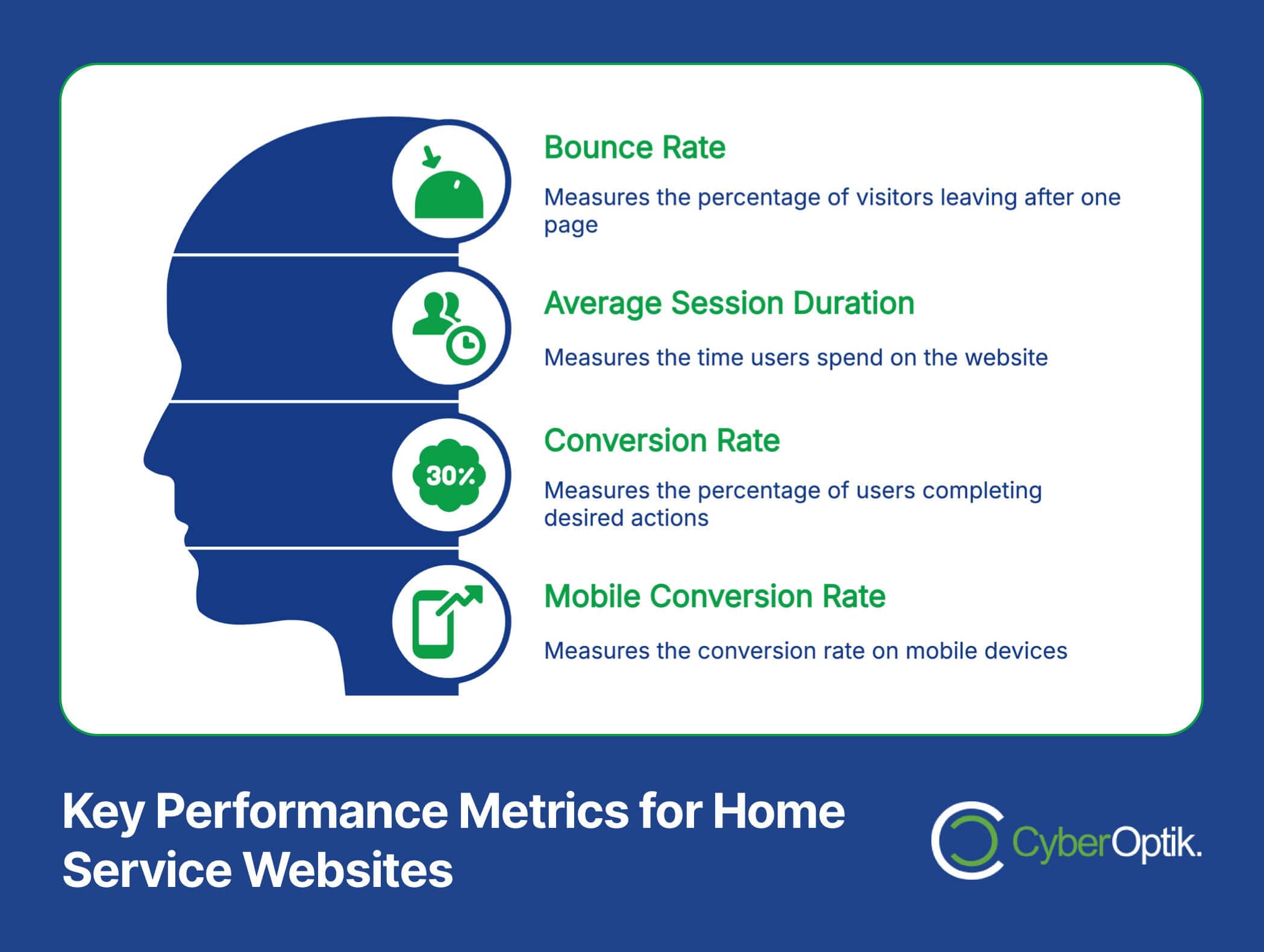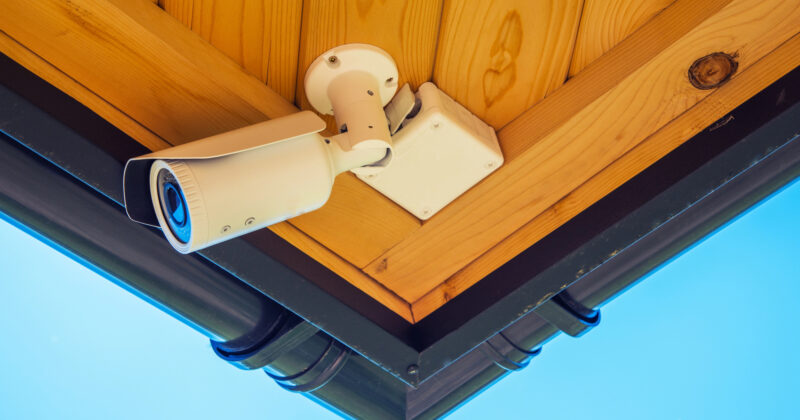In the home services industry, your website is often the first impression potential clients have of your business. It serves as your digital storefront and can make or break a potential client’s decision to contact you. Research shows that 94% of first impressions are design-related, with users forming these impressions in just 0.05 seconds. (Source: SWEOR)
For plumbers, electricians, HVAC contractors, and cleaning services, a user-friendly website isn’t just about looking good. It’s about converting visitors into clients. Many service businesses struggle with websites that look outdated, load slowly, or fail to guide visitors toward taking action.
We’ve worked with numerous home service businesses in Chicago and have seen firsthand how strategic design changes can dramatically improve client engagement. This guide explores essential website design tips specifically tailored for home service businesses looking to increase conversions.
Why Website Design Is Critical for Home Service Businesses
The digital landscape is increasingly competitive for home service businesses. Your website’s design directly impacts how potential clients perceive your company’s professionalism and reliability. Studies show that 50% of consumers judge a business’s credibility based solely on website design. (Source: SWEOR)
For service-based businesses where trust is paramount, this statistic highlights the importance of investing in quality web design. When homeowners need services, they’re often in urgent situations—a broken pipe, a faulty electrical system, or heating failure. They need to quickly determine if your business can solve their problem.
A poorly designed website sends red flags to potential clients. In fact, 89% of consumers will switch to a competitor after a poor website experience. (Source: Made By Shape) For home service businesses, this means direct revenue loss.
Let’s examine how different website elements influence potential clients’ perception of your business:
| Website Element | Impact on Customer Perception | Priority Level |
|---|---|---|
| Overall Design Quality | Forms first impression in 0.05 seconds | Critical |
| Mobile Responsiveness | Affects 56% of home service searchers | High |
| Page Load Speed | 53% abandon sites loading >3 seconds | Critical |
| Navigation Clarity | 94% prioritize easy navigation | Critical |
| Trust Signals | 57% only use businesses with 4+ star reviews | High |
Understanding these elements helps prioritize your website design investments. Each component plays a crucial role in converting visitors to clients for your home service business.
Essential Design Elements for Home Service Business Websites
Mobile Responsiveness and Why It Matters
Mobile optimization is no longer optional for home service businesses. Data shows that 56.1% of home service searches occur on mobile devices. (Source: Invoca) This means more than half of your potential clients are viewing your website on smartphones or tablets.
Despite this trend, many home service websites still provide a subpar mobile experience. While 90% of websites claim to be responsive, the quality of that responsiveness varies dramatically. (Source: Higo Creative)
The stakes are high: 73% of users will leave a non-responsive site for a competitor’s mobile-friendly alternative. (Source: HubSpot) For home service businesses, this translates to direct revenue loss.
When designing a mobile-responsive website for your home service business, consider these performance metrics:
| Metric | Mobile Performance | Desktop Performance | Mobile Optimization Priority |
|---|---|---|---|
| Traffic Share | 56.1% of searches | 43.9% of searches | High |
| Conversion Rate | 40% higher when properly optimized | Baseline comparison | High |
| Bounce Rate | 53% if loading >3 seconds | Lower but still significant | Critical |
| Local Search Impact | 78% lead to purchases within 24 hours | Lower urgency | Critical |
These statistics demonstrate why mobile optimization should be a priority for any home service website redesign. Mobile-optimized sites see 40% higher conversions than their non-optimized counterparts. (Source: Higo Creative)
User-Friendly Navigation Structure
Clear navigation is crucial for home service websites. Research indicates that 94% of consumers prioritize easy navigation when evaluating websites. (Source: My Codeless Website) When potential clients need urgent services, they must quickly find information about your offerings, service areas, and contact methods.
A study of user behavior found that 38% of visitors check a website’s layout and navigation links immediately upon arrival. (Source: My Codeless Website) This highlights the importance of intuitive design for home service businesses.
For home service websites, we recommend a navigation structure that includes:
- Clear service categories (grouped logically by type)
- Service area information (prominently displayed)
- Obvious contact information (visible on all pages)
- Emergency service indicators (when applicable)
- Simple quote request process (minimizing form fields)
When navigation is confusing or services are buried in submenus, potential clients become frustrated. Studies show that 42% of visitors will abandon a website due to poor functionality, including navigation issues. (Source: My Codeless Website)
Visual Design and Color Psychology

Visual elements play a crucial role in engaging visitors on home service websites. Research shows that 40% of users value photos and images most when visiting websites. (Source: Higher Visibility) For home service businesses, this means including high-quality images of completed projects, service professionals at work, and before/after results when appropriate.
Color choices also significantly impact visitor perception and behavior. Studies indicate that 46% of users prefer blue color schemes, while 30% favor green. (Source: Higher Visibility) These preferences align well with many home service industries, where trust (blue) and reliability (green) are key values.
The psychological impact of colors on home service websites can be strategically leveraged:
| Color | Psychological Association | Best Used For | Home Service Application |
|---|---|---|---|
| Blue | Trust, Reliability, Professionalism | Primary brand color, Headers | Plumbing, Water Services, Cleaning |
| Green | Growth, Freshness, Eco-friendly | Accents, Environmental services | Lawn Care, Cleaning, Eco-friendly options |
| Red | Urgency, Energy, Importance | CTAs, Emergency services | Emergency services, Limited-time offers |
| Orange | Enthusiasm, Affordability | Secondary accents, Special offers | Electrical, General Contracting |
Color psychology can significantly impact conversion rates when applied strategically. Research shows that red CTAs can boost conversions by 34% compared to other colors. (Source: My Codeless Website)
Performance Optimization for Home Service Websites

Page Speed and Its Impact on Conversions
Website loading speed directly impacts both user experience and conversion rates for home service businesses. A staggering 53% of mobile users abandon sites that take longer than three seconds to load. (Source: SWEOR) When someone has an urgent plumbing issue or HVAC emergency, they simply won’t wait for a slow website.
The financial impact is significant: slow-loading websites cost businesses approximately $2.6 billion in lost revenue annually. (Source: Higo Creative) Every moment of delay has consequences, with research showing that a one-second delay in page response can reduce conversions by 7%. (Source: Josiah Roche)
For home service businesses, these statistics translate to missed phone calls, fewer form submissions, and ultimately, lost jobs and revenue. Common speed issues and solutions include:
| Speed Issue | Impact on User Experience | Solution | Implementation Difficulty |
|---|---|---|---|
| Unoptimized Images | 70% abandon due to slow images | Image compression, proper sizing | Easy |
| Excessive Plugins | Increased HTTP requests | Audit and remove unnecessary plugins | Moderate |
| Shared Hosting | Inconsistent loading times | Upgrade to managed WordPress hosting | Easy |
| No Caching | Repeated processing | Implement page and browser caching | Moderate |
In our experience working with home service clients, addressing these common performance issues typically results in immediate improvements to both user experience and conversion rates.
Optimizing Images and Media
Images are crucial for home service websites to showcase work quality, but they’re often the primary culprit behind slow loading times. Research indicates that 70% of consumers abandon websites due to slow-loading images. (Source: Higo Creative)
Home service websites typically feature numerous images of completed projects, before/after comparisons, and team photos. While these images build trust and showcase expertise, they require proper optimization.
Effective image optimization strategies for home service websites include:
- Compressing all images before uploading
- Using next-gen formats like WebP when supported
- Implementing lazy loading for below-the-fold images
- Specifying image dimensions in HTML
- Using appropriately sized images for different devices
We’ve found that implementing these optimization techniques can reduce page load times by 30-50% for many home service websites, directly improving user experience and conversion rates.
Conversion-Focused Elements for Home Service Websites
Effective Call-to-Action Design
Call-to-action (CTA) elements are critical conversion points on home service websites, yet 70% of small business websites lack a clear CTA. (Source: Josiah Roche) Without clear direction, potential clients may visit your site but never take the next step toward becoming customers.
Home service businesses should include CTAs that address the typical customer journey stages. Strategic placement throughout your website is crucial for maximizing conversions.
For home service websites, we recommend these high-converting CTA placements:
- Above the fold on the homepage with immediate service options
- At the bottom of service description pages with next steps
- Within pricing information sections to capture decision-ready prospects
- Following positive testimonials to leverage social proof
- In the website header or sticky navigation for persistent availability
Pop-up CTAs can be effective when used appropriately. Data shows they convert at an average rate of 3.09%. (Source: My Codeless Website) However, they should be timed appropriately and not disrupt the mobile experience.
Trust Signals and Social Proof
Trust signals are particularly important for home service businesses, where customers are literally inviting service providers into their homes. Research shows that 57% of consumers only use businesses with 4+ star reviews. (Source: Invoca)
The strategic placement of trust elements throughout your website reinforces credibility at every stage of the customer journey. For home service businesses, local trust signals are particularly important.
Data shows that 78% of mobile local searches lead to purchases within 24 hours. (Source: Invoca) This statistic highlights the urgency behind many home service searches and the importance of establishing immediate trust with local customers.
Measuring Website Engagement and Success
For home service websites, certain metrics are particularly important for measuring engagement and conversion effectiveness. Regular monitoring allows for data-driven improvements to your website design.
We recommend tracking these key performance indicators for home service websites:
| Metric | What It Measures | Target for Home Services | Improvement Strategy |
|---|---|---|---|
| Bounce Rate | Percentage of visitors leaving after viewing only one page | <40% | Improve page load speed, enhance mobile experience |
| Average Session Duration | Time users spend on your website | >2 minutes | Add valuable content, improve navigation |
| Conversion Rate | Percentage of visitors completing desired actions | >3% for service inquiries | Optimize CTAs, streamline forms |
| Mobile Conversion Rate | Conversion rate specifically on mobile devices | Within 20% of desktop rate | Enhance mobile UX, simplify mobile forms |
Establishing baseline performance allows you to measure the impact of design changes and identify areas for improvement. As industry trends and customer expectations evolve, your website should adapt accordingly.
Recent trends in home service website design include enhanced appointment scheduling functionality, integration with service management software, and the strategic use of AI tools. In fact, 93% of designers now report using AI tools to improve website functionality and design. (Source: Higo Creative)
An effective, user-friendly website is no longer optional for home service businesses—it’s essential for growth and competitiveness. The statistics throughout this article highlight the direct relationship between website design and business outcomes.
By implementing mobile-responsive design, intuitive navigation, strategic visual elements, performance optimization, compelling CTAs, and strong trust signals, your home service website can significantly increase client engagement and conversions.
Remember that website design is not a one-time project but an ongoing process of refinement based on user behavior, industry trends, and performance data. Regularly reviewing your metrics and making iterative improvements ensures your website continues to serve your business goals effectively.
At CyberOptik, we specialize in creating high-performing websites for home service businesses throughout Chicago. Our approach combines design excellence with technical optimization and conversion strategy to help service businesses transform their digital presence into a powerful lead generation tool.
Ready to improve your home service website’s performance? Learn how to address common website performance issues or contact our team today for a comprehensive website evaluation and personalized recommendations.




